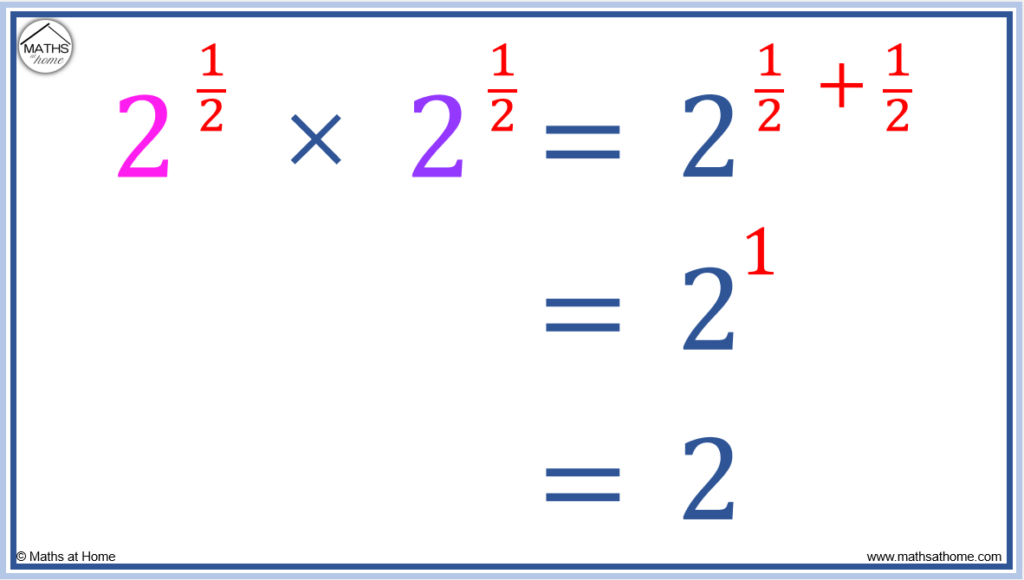Video Lesson: How to Multiply Exponents
Rules for Multiplying Terms with Exponents
- If the base number is the same, keep the base number the same and add the exponents.
- If the base numbers are different but the exponent is the same, multiply the base numbers and raise it to the same exponent.
- If the base number and the exponents are different, then work out each of the terms separately and then multiply them.
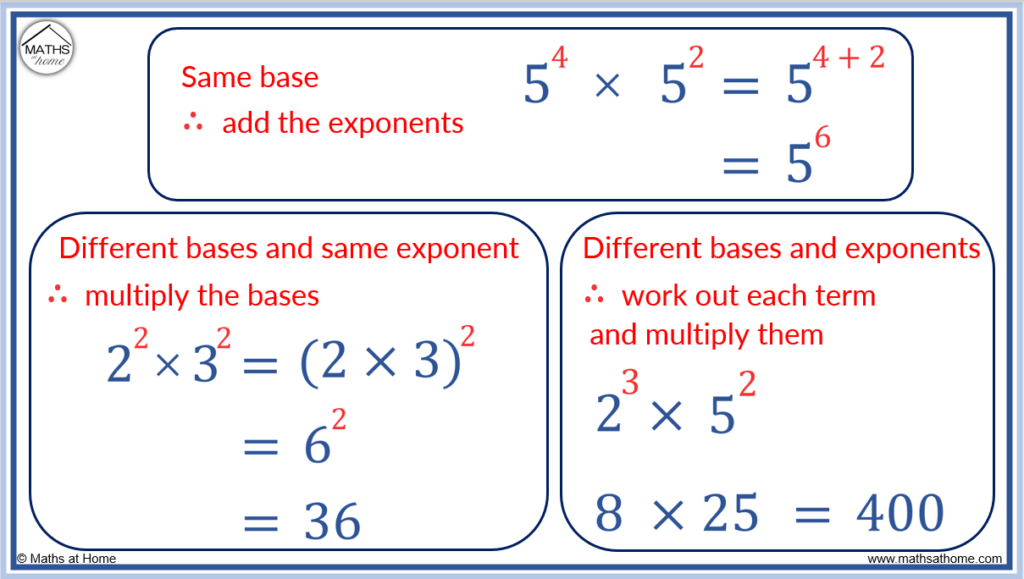
How to Multiply Exponents with the Same Base
To multiply terms with the same base, add their exponents. For example, 𝑥5 × 𝑥4 = 𝑥9, since 5 + 4 = 9.
which simplifies as
.
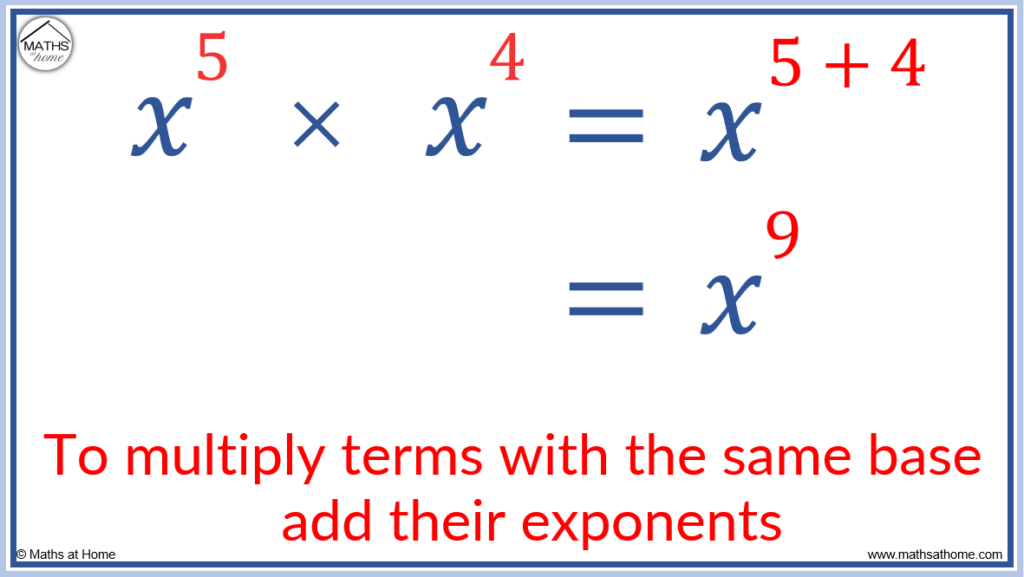
To multiply exponents with the same base, keep the base the same and only add the exponents. For example, 32 × 33 = 35.
Notice that we add the exponents of 2 + 3 = 5 but we keep the base number as 3.
We don’t multiply the base numbers together.
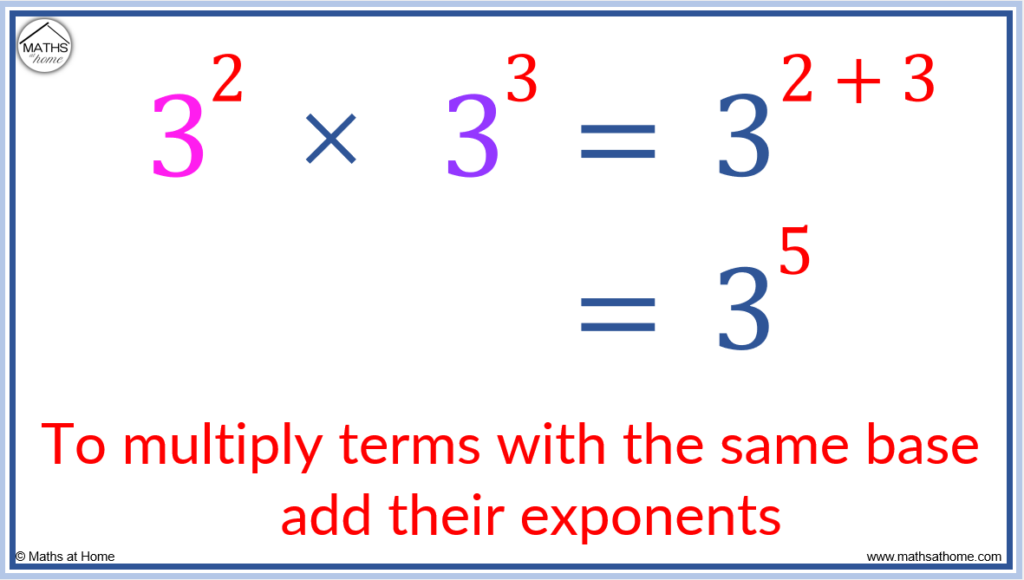
It does not matter how many terms there are, if terms with the same base are multiplied, add the exponents.
For example, in the question :
Here can be written as
since a is the same as a1.
Therefore and so,
.
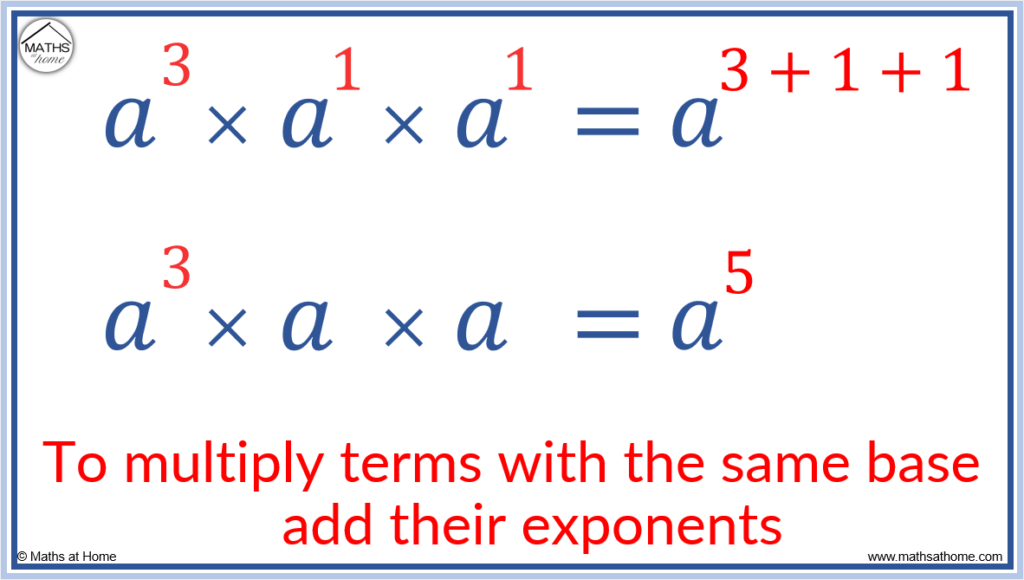
How to Multiply Exponents with Coefficients and Variables
To multiply exponential terms with variables and coefficients, multiply the coefficients and add the exponents of each different variable separately. For example, 2𝑥5 × 3𝑥4 = 6𝑥9. This is because the coefficients are multiplied with 2 × 3 = 6 and the exponents are added with 5 + 4 = 9.
Coefficients are the numbers at the front of each term. We multiply these when we multiply terms because they are normal numbers that multiply when we have a multiplication sign.
- So 2 × 3 = 6
The exponents on each variable behave according to laws of exponents. That is, we actually add them when we have a multiplication sign.
- So 5 + 4 = 9
Therefore: 2𝑥5 × 3𝑥4 = 6𝑥9.

How to Multiply Exponents with Many Variables
To multiply terms that have different variables, multiply the coefficients and then add the exponents of each variable separately, letter by letter. For example in 5𝑥2y3 × 2𝑥3y4, the coefficients are multiplied so that 5 × 2 = 10, then the exponents on 𝑥 are added so that 2 + 3 = 5 and finally, the exponents on y are added so that 3 + 4 = 7. Therefore 5𝑥2y3 × 2𝑥3y4 = 10𝑥5y7.
- 5 × 2 = 10
- 𝑥2 × 𝑥3 = 𝑥5
- y3 × y4 = y7
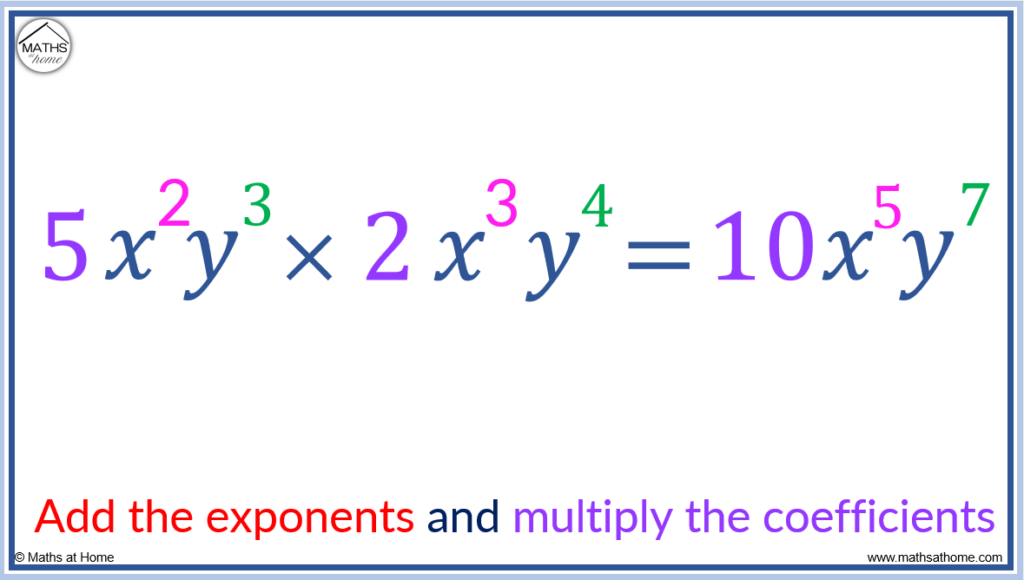
Here is another example of multiplying variables with exponents: simplify 4a2b × 5ab5.
- 4 × 5 = 20
- a2 × a is the same as a2 × a1 which equals a3
- b × b5 is the same as b1 × b5 which equals b6
Therefore 4a2b × 5ab5 = 20a3b6.
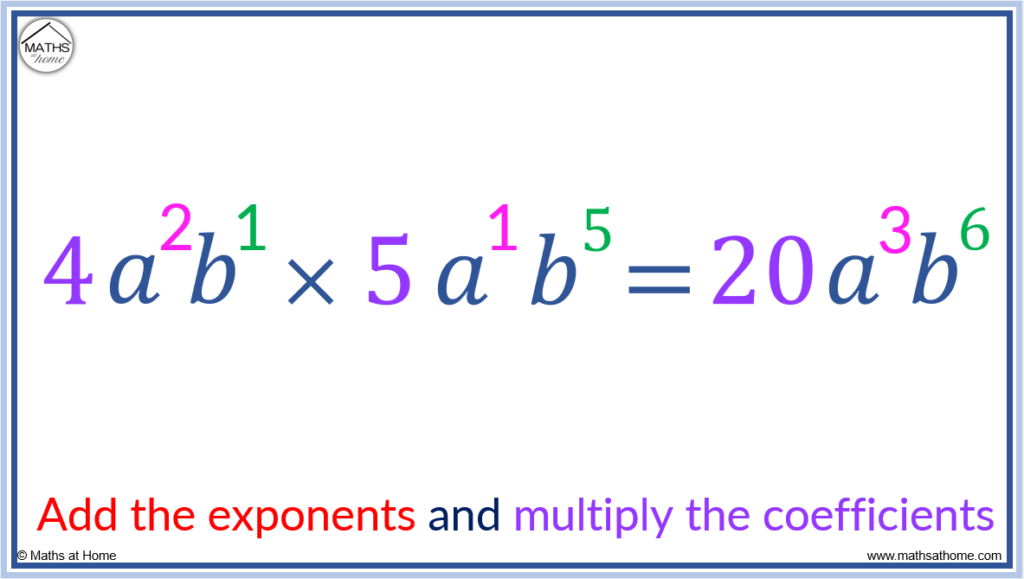
How to Multiply Negative Exponents
To multiply terms with negative exponents, we add the exponents in the normal manner. For example a8 × a-3 = a8+-3 which is the same as a8-3 which equals a5.
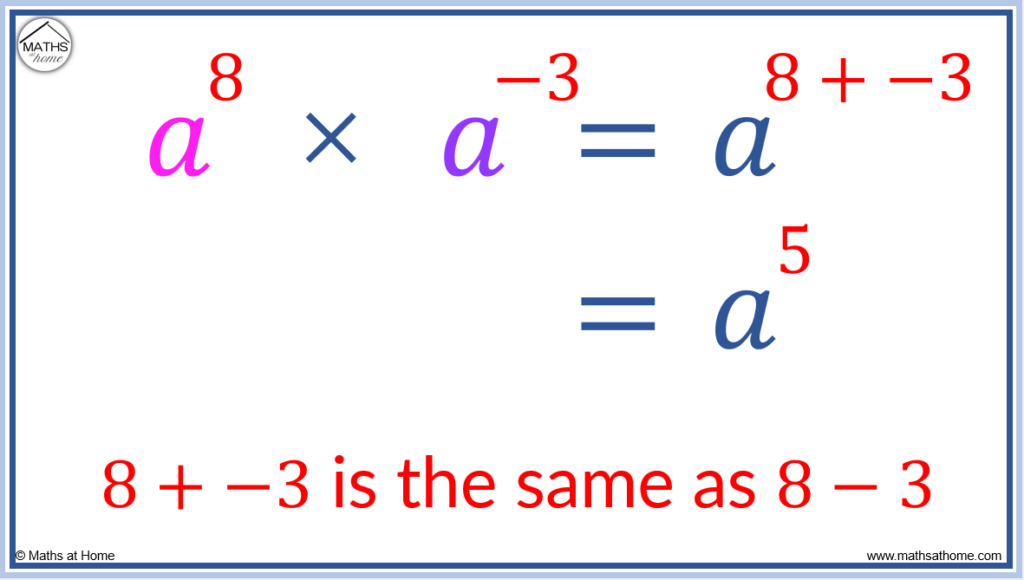
The following rules are used to add negative numbers when multiplying exponents:
- ‘+-‘ and ‘-+’ can both be replaced with a subtraction ‘-‘
- -a-b = -(a+b)
For example, 5-2 × 5-1 = 5-2+-1.
5-2+-1 is the same as 5-2-1 which equals 5-3.
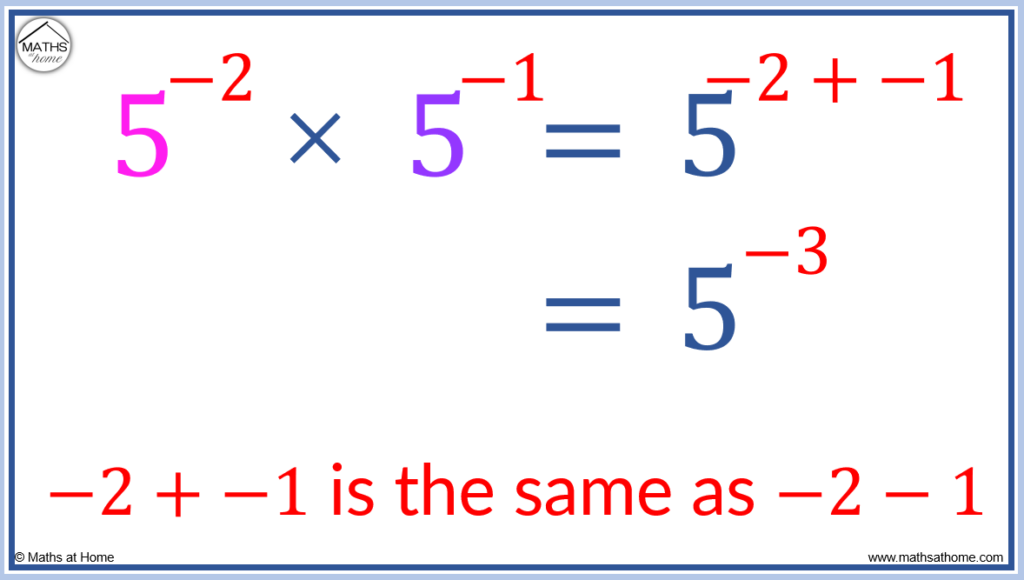
Here is another example of multiplying exponents with negative indices.
c-6 × c4 = c-6+4 which equals c-2.
To calculate -6+4, it can be easier to calculate 4-6 to obtain -2.
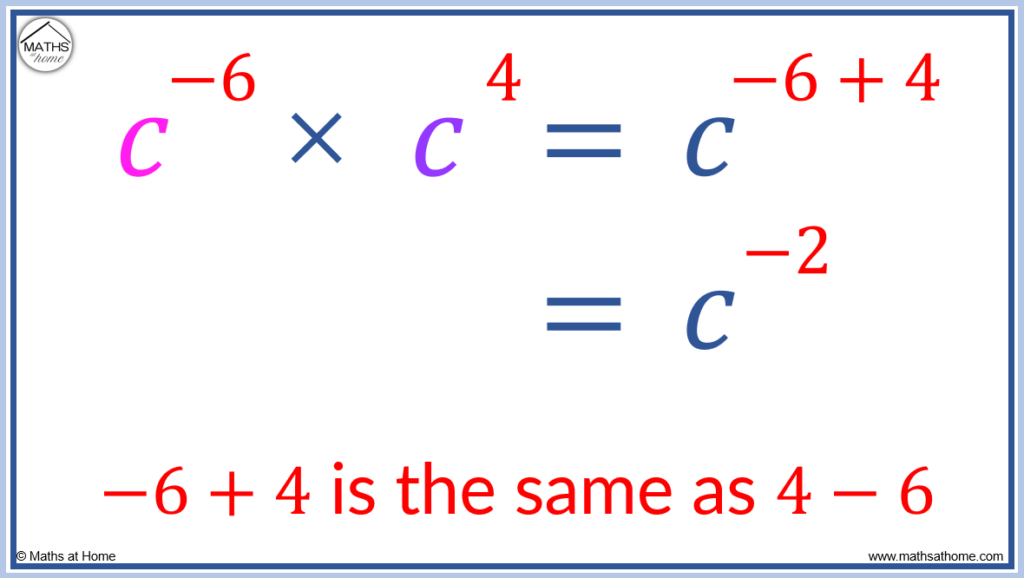
Examples of Multiplying Exponents
Here are some examples of multiplying terms containing exponents:
| Multiplying Exponents Question | Answer |
| x3 × x2 = | x5 |
| x2 × x4 × x5 = | x11 |
| x × x2 = | x3 |
| x-4 × x2 = | x-2 |
| x5 × x-2 = | x3 |
| x-3 × x-5 = | x-8 |
| x-3 × x8 = | x5 |
| 2x3 × 3x5 = | 6x8 |
| 10x2 × 2x × 3x3 = | 60x6 |
| 5x3y2 × 2x5y2 = | 10x8y4 |
| -10xy × 3x4y | -30x5y2 |
Formula for Multiplying Exponents with the Same Base
The formula for multiplying exponential terms with the same base is am × an = am+n.
The formula for multiplying exponential terms

For example, in this question we multiply exponents of ten: :
- a= 10
- m = 3
- n = 6
Therefore becomes
since 3 + 6 = 9.
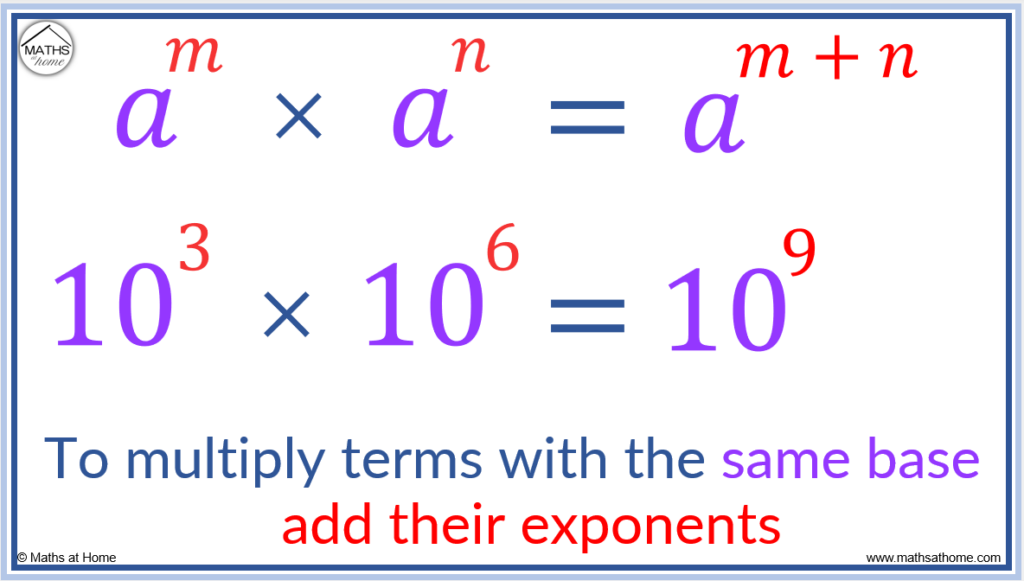
We can multiply exponents of Euler’s number, ‘e’ in the same manner.
To multiply exponents with ‘e’, we add the exponents.
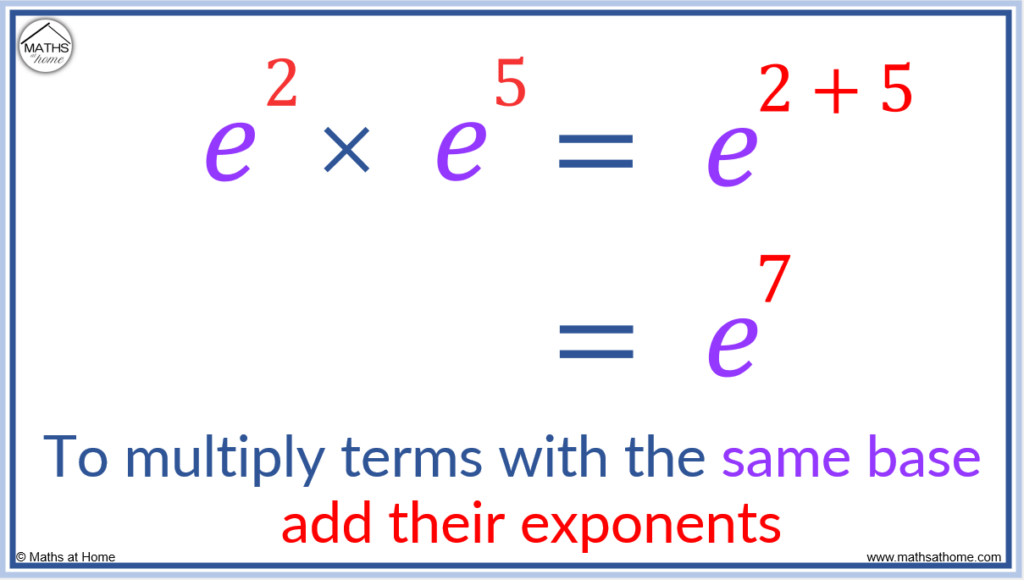
Why do we Add Exponents When we Multiply them?
When two terms with the same base are multiplied, we add the exponents. This is because the exponent acting on a number tells us how many times that number is multiplied. This effect is combined when two exponents are multiplied.
To understand why we add exponents when two terms are multiplied, it is best to consider an example.
- 32 means 3 × 3
- 33 means 3 × 3 × 3
Therefore 32 × 33 is the same as (3 × 3) × (3 × 3 × 3) and this equals 35 since there are 5 threes multiplied in total.

How to Multiply Exponents with Different Bases
Terms with the same exponent and different bases can be multiplied using the formula am × bm = (a × b)m. For example, 22 × 32 = (2 × 3)2.
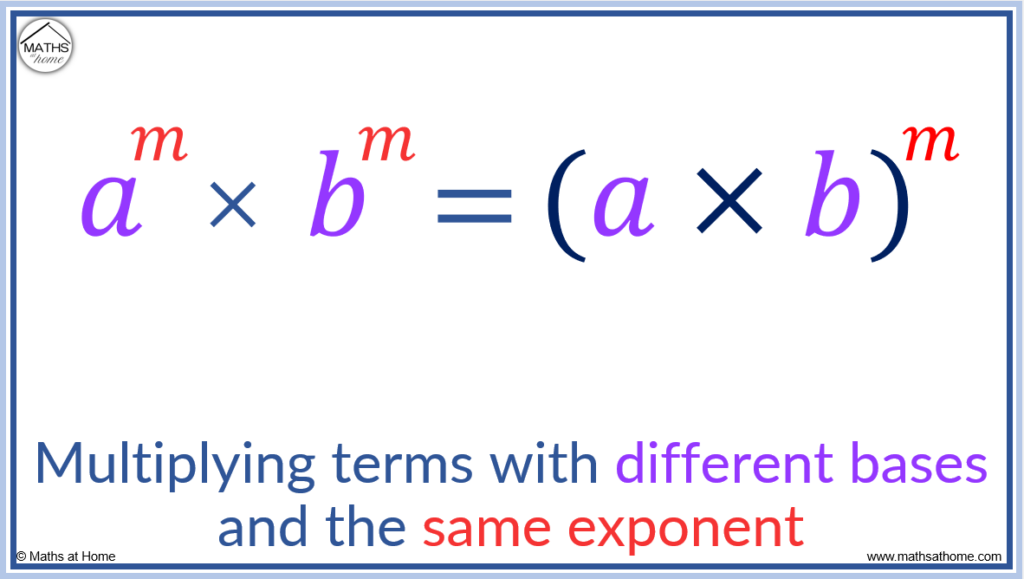
In the example of 22 × 32, the bases are different but the exponents are the same. Both numbers are raised to the power of 2.
That means the two base numbers can be multiplied first and then raised to the power of 2.
Using the formula of am × bm = (a × b)m, we have:
- a = 2
- b = 3
- m = 2
And so, am × bm = (a × b)m becomes 22 × 32 = (2 × 3)2.
Therefore 22 × 32 = 62 which equals 36.
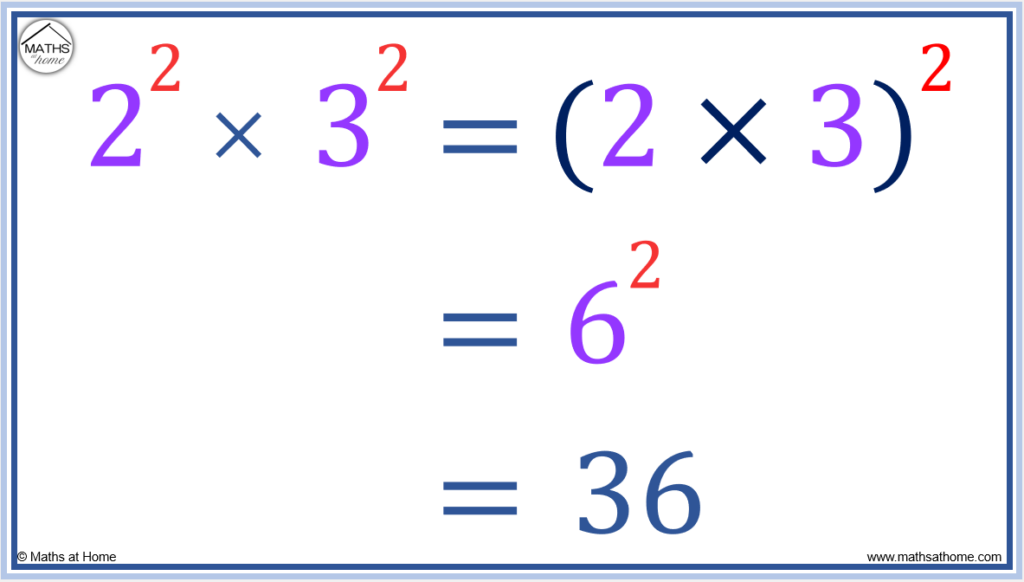
Here is another example of 56 × 26.
Calculating 56 and 26 and then multiplying them together can be quite time consuming.
In this instance, it is easier to use the rule of am × bm = (a × b)m, where:
- a = 5
- b = 2
- m = 6
Therefore, 56 × 26 = (5 × 2)6.
This is easier to calculate because we obtain 106. Finding powers of 10 is easy because the power of 6 tells us that there are 6 zeros in the answer.
106 = 1 000 000.
Therefore 56 × 26 = 1 000 000.
Multiplying Exponents with Square Roots
Finding the square root of a value is the same as raising it to the power of one half. For example √2 × √2 is the same as 2½ × 2½. Then adding the exponents, we obtain 21. Therefore √2 × √2 = 2.
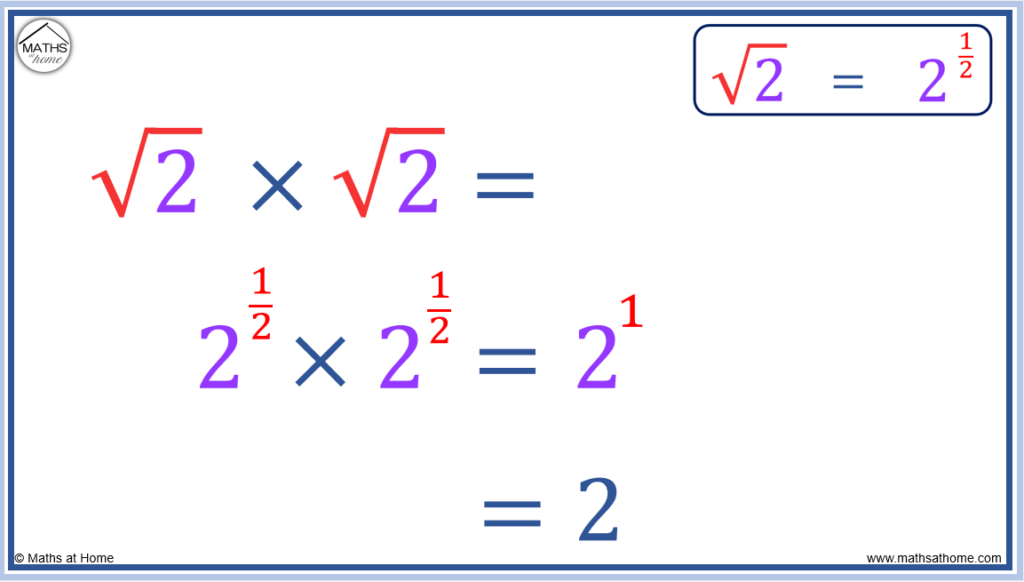
One half add one half equals one whole and therefore 2½ × 2½ = 2.
